Ubuntu 24.04 LTS, codename Noble Numbat, was released on April 25, 2024, and is now available for download from the official Ubuntu website and its mirrors. This release will receive official security and maintenance updates for five years, until April 2029.
Some key points about Ubuntu 24.04 LTS:
- Release date: April 25, 2024
- Codename: Noble Numbat
- Support period: 5 years (until April 2029)
- Download from: https://ubuntu.com/download/desktop or official mirrors
Ubuntu has long been recognized as one of the most popular and widely used Linux distributions among desktop users.
However, it has experienced fluctuations in its popularity, particularly during the period when it introduced significant changes to its desktop experience with the user interface.
A key feature of this new Ubuntu release is that it comes out at the same time (or almost the same time) as other popular versions like Kubuntu, Lubuntu, Xubuntu, and Ubuntu Studio.
This gives users more options for desktop environments, all with official support. The support period can differ (usually 3 years for non-LTS and 5 years for LTS versions), but releasing them together makes it easier for both individuals and companies to choose.
Ubuntu 24.04 Features
Here are some noticeable changes in Ubuntu 24.04 (Noble Numbat):
- Modern Desktop – Ubuntu 24.04 utilizes GNOME 46, offering a refined interface, improved multitasking, and better performance.
- Revamped Installer – The installer boasts a fresh look, improved accessibility, and even supports easier deployment for businesses.
- Upgraded App Center – The App Center features a new Flutter-based interface for smoother navigation, clearer categories, and user ratings.
- Enhanced Security – As an LTS release, Ubuntu 24.04 prioritizes stability with the latest Linux kernel 6.8 for improved security and hardware compatibility.
- Window Tiling Assistant – GNOME 46 introduces advanced window tiling, allowing efficient snapping of windows to various screen sections, including corners.
- Granular Update Control – Separate stability and cutting-edge updates offer users more control over what gets installed.
- Year 2038 Fix (ARM) – The year 2038 issue is addressed on ARM architecture, ensuring accurate timekeeping for future users.
- Minimal Default Installation – The default Ubuntu Desktop installation is now minimal, with options to add applications like LibreOffice or Thunderbird.
Ubuntu has one of the most simple and straightforward installers among all Linux distributions which makes the job of installing the system on hardware very easy even for a beginner or an uninitiated Linux or Windows user with just a few clicks.
System Requirements
Following are the minimum system requirements for installing Ubuntu 24.04 Desktop:
- A 2 GHz dual-core processor
- 4 GB of RAM
- 25 GB of free hard drive space.
This tutorial will cover fresh installation of Ubuntu 24.04 and with a basic walk through and a few system tweaks and applications.
Step 1: Installing Ubuntu 24.04 Desktop
1. Download the Ubuntu ISO image from the Ubuntu website, and then use a USB Linux Installer to burn the ISO to a USB stick.
2. After creating a bootable Ubuntu USB drive, restart your computer and go into the BIOS or boot menu by pressing the designated key (usually F2, F12, or Del) during startup. Choose the USB drive as the boot device and press Enter.
3. The USB content is loaded into your RAM memory until it reaches the installation screen where you will be given the option to “Try Ubuntu” or “Install Ubuntu“.
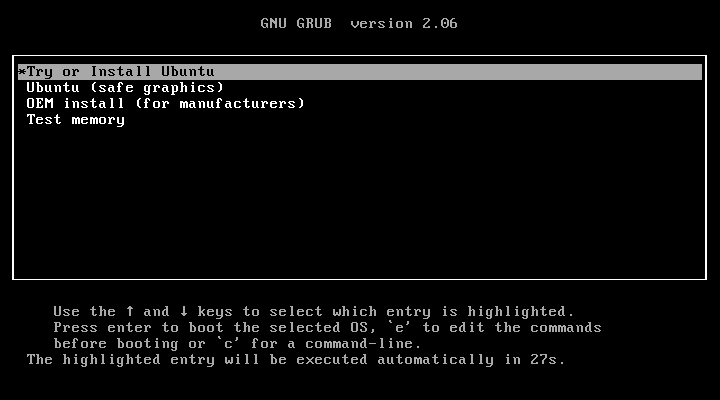
4. The next step asks you to test Ubuntu before installing it, choose “Try Ubuntu“, which allows you to use Ubuntu from the USB drive without making any changes to your computer’s hard drive.
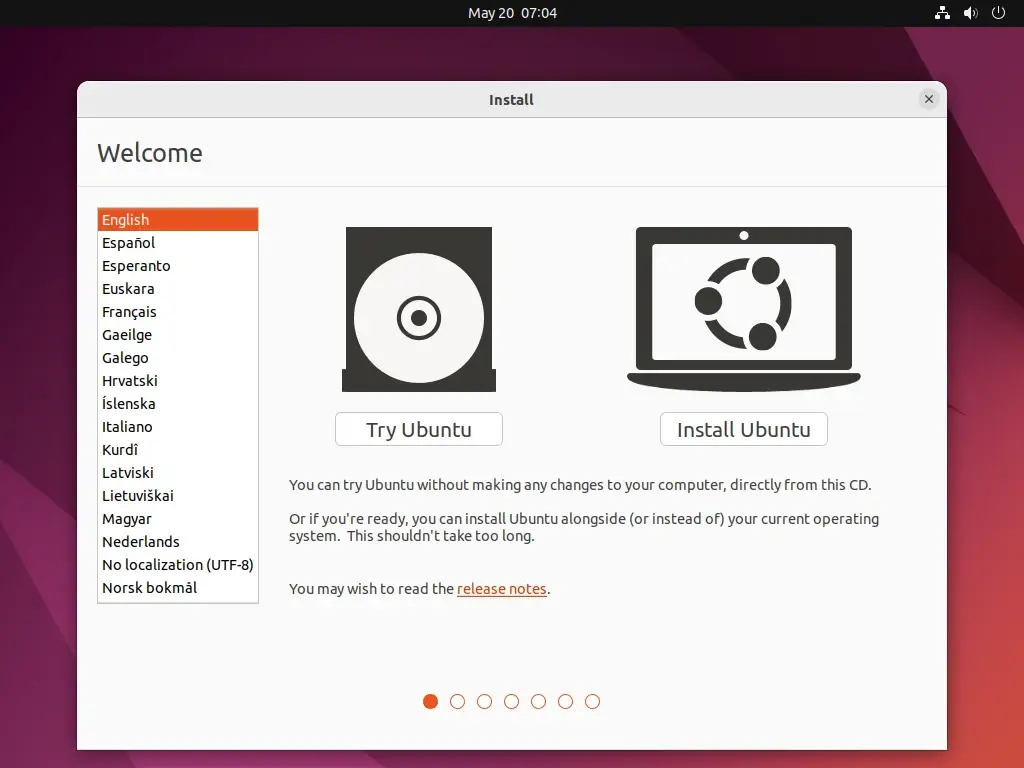
5. If you’re ready to install Ubuntu, select “Install Ubuntu” and follow the on-screen instructions to select your language, and keyboard layout.
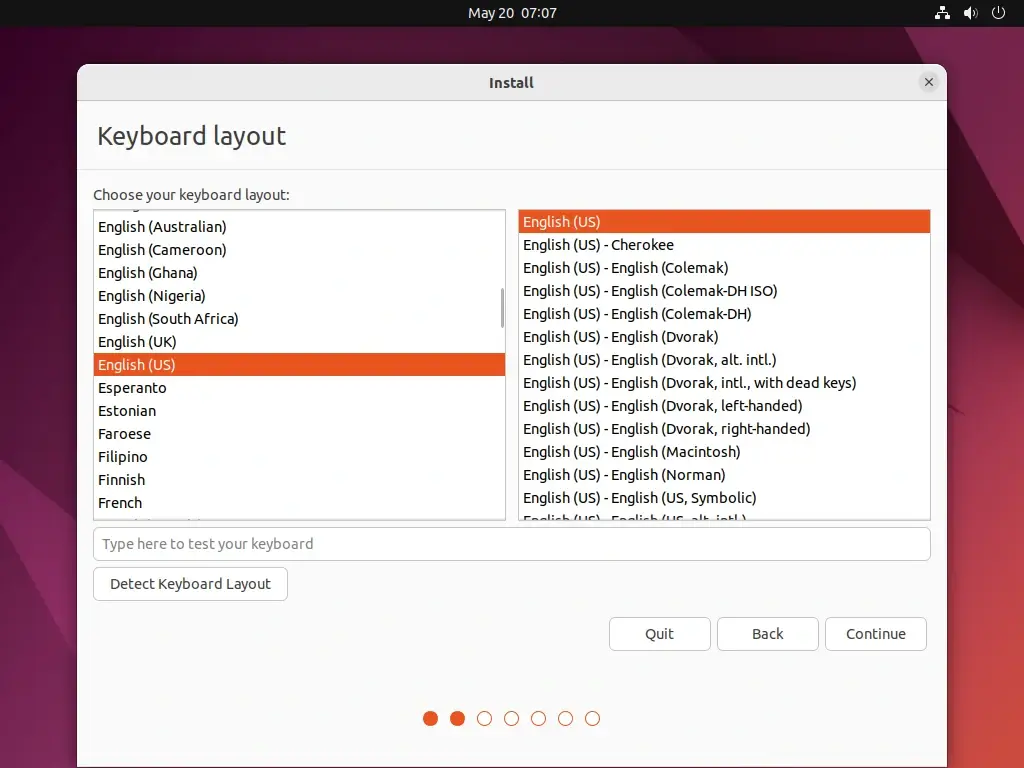
6. Next, choose “Normal installation” to install the full Ubuntu desktop with office software, games, and media players. You will also have the option to download updates and third-party software during the installation process.
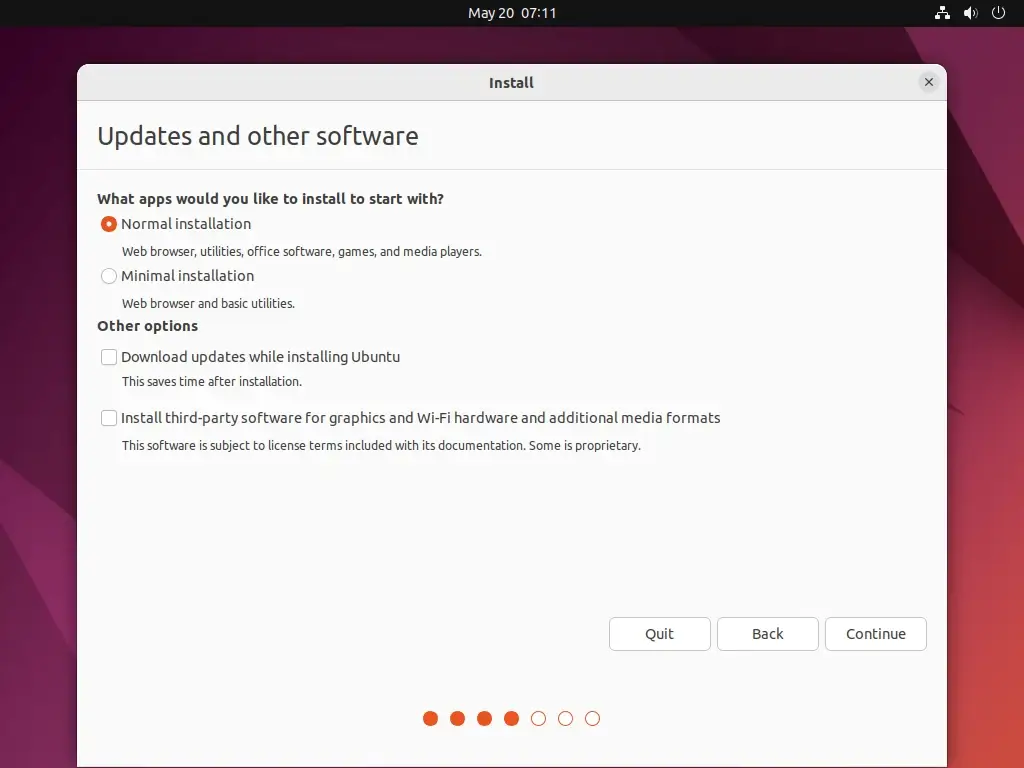
7. Ubuntu will prompt you to choose how you want to partition your disk. You can select “Erase disk and install Ubuntu” to use the entire disk or choose “Something else” for manual partitioning.
If you’re new to partitioning, it’s recommended to select the “Erase disk and install Ubuntu” option.
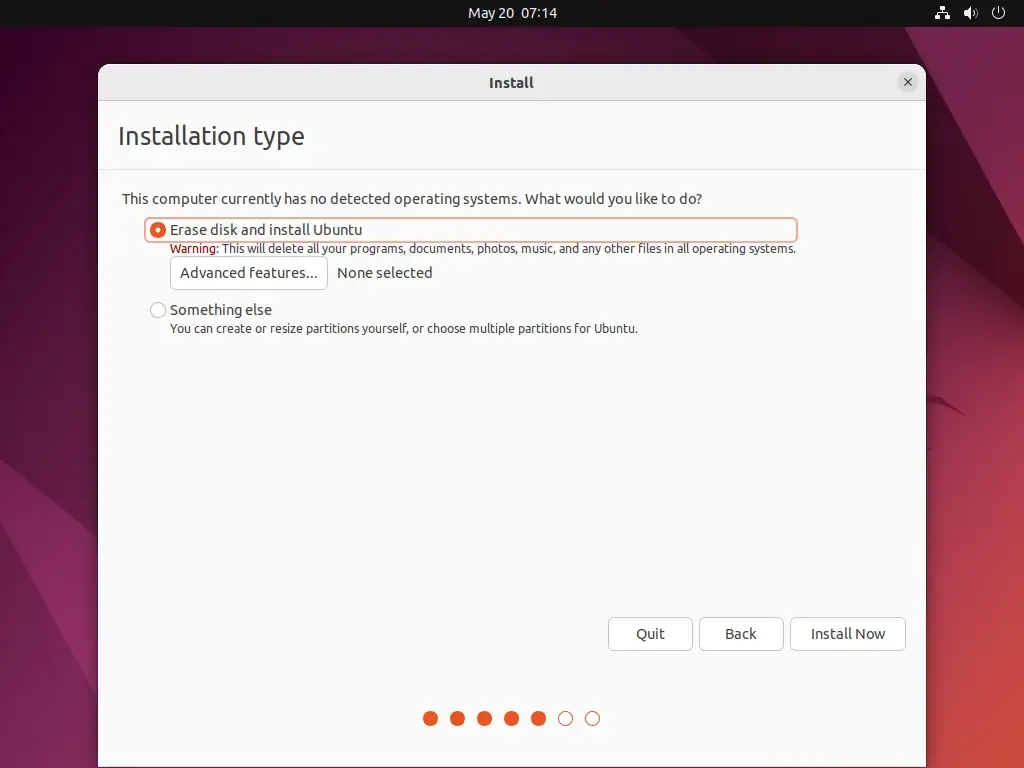
8. After your disk has been sliced hit on Install Now button. In the next stage choose your Location from the map – Location will have an impact on your system time also so be advised to choose your true location.
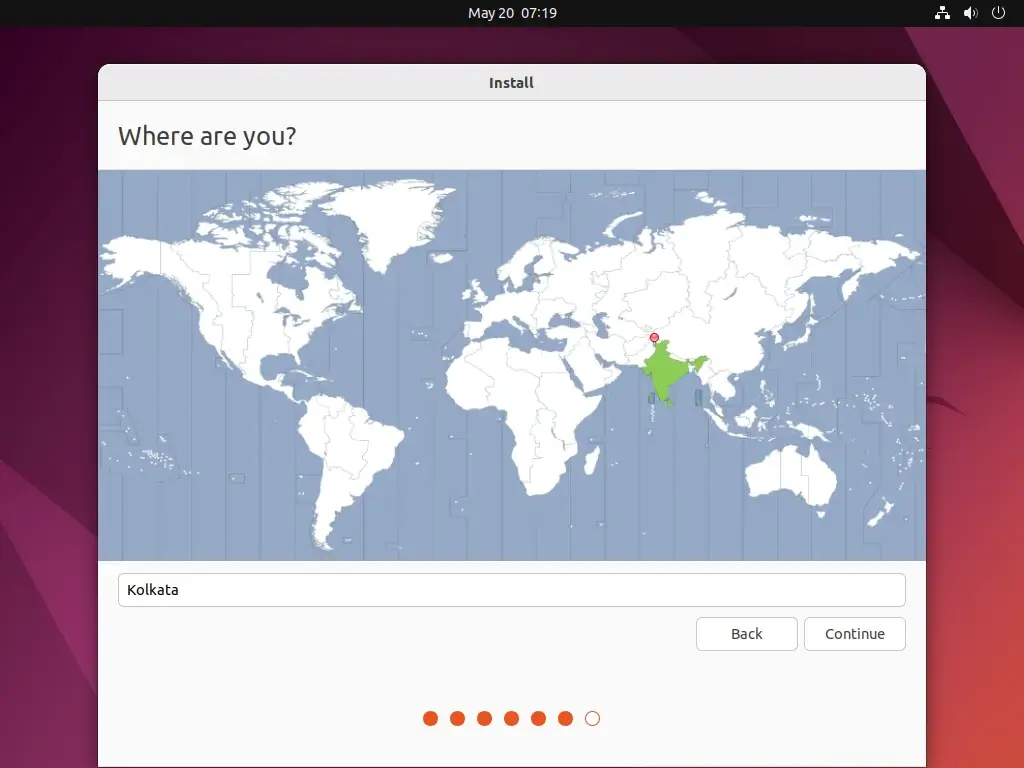
9. Next, enter your name, desired username, password, and computer name to create a user account for Ubuntu.
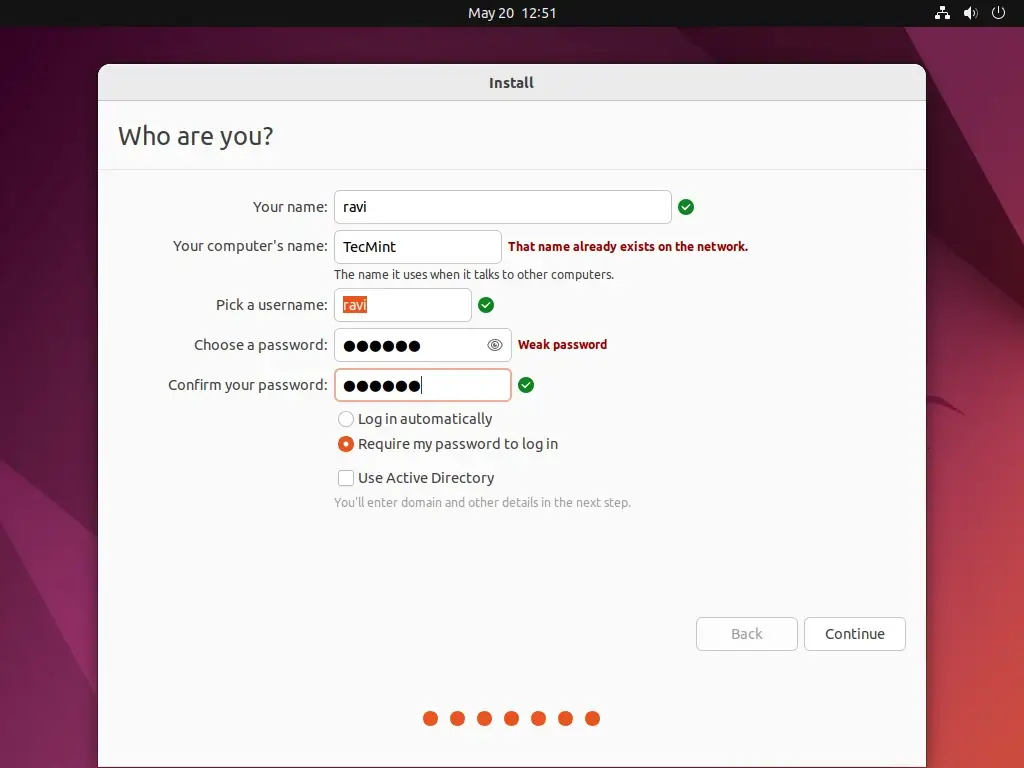
10. Review your settings and click “Continue” to begin the installation process.
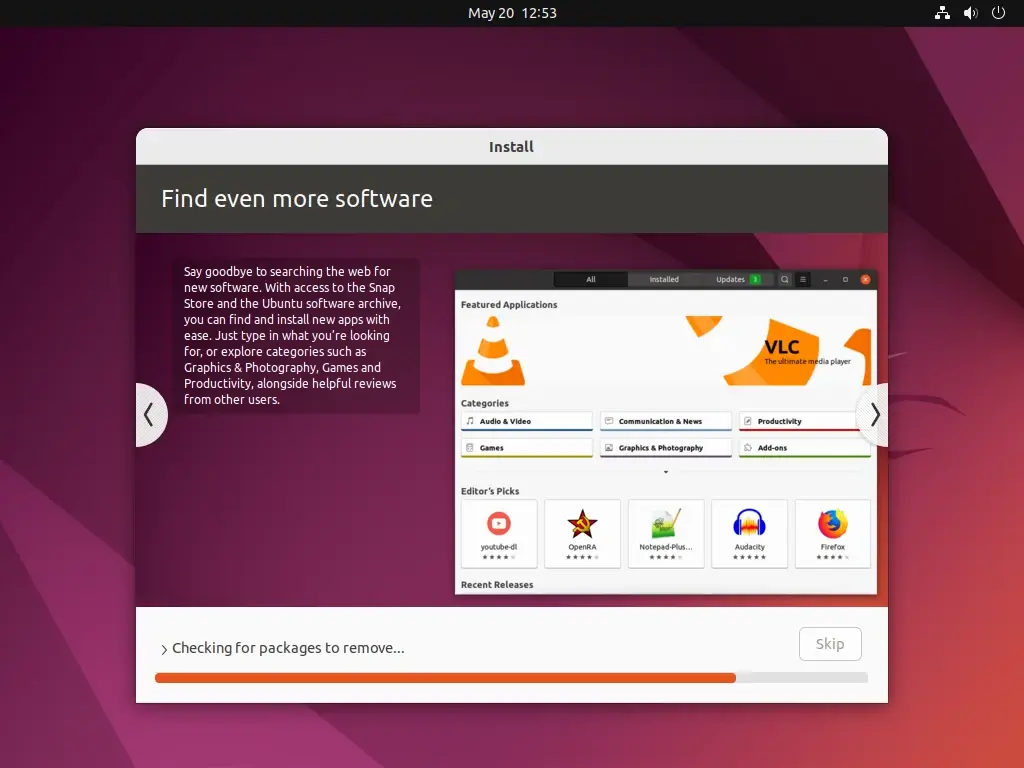
The installer now starts copying system files to your hard drive while it presents you with some information about your brand new Ubuntu LTS for 5 years support system.
After the installer finishes his job click on Restart Now prompt and press Enter after a few seconds for your system to reboot.
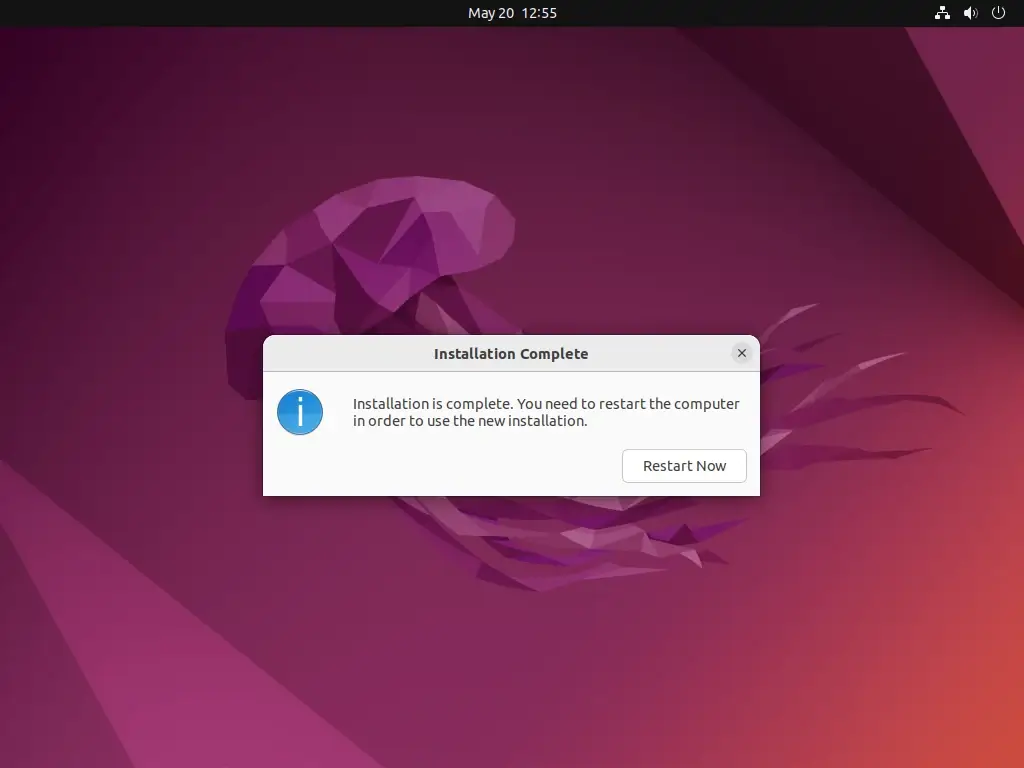
Congratulations!! Ubuntu 24.04 is now installed on your machine and is ready for daily usage.
Step 2: System Update and Basic Software
After first logging into your new system is time to review your software sources to ensure you have all necessary repositories enabled, including main, universe, restricted, and multiverse.
Check for Updates
Open “Software & Updates” from the applications menu, go to the “Ubuntu Software” tab, and ensure that all the checkboxes for the Ubuntu repositories are checked.
You may also check the “Source Code” option if you want access to source packages.
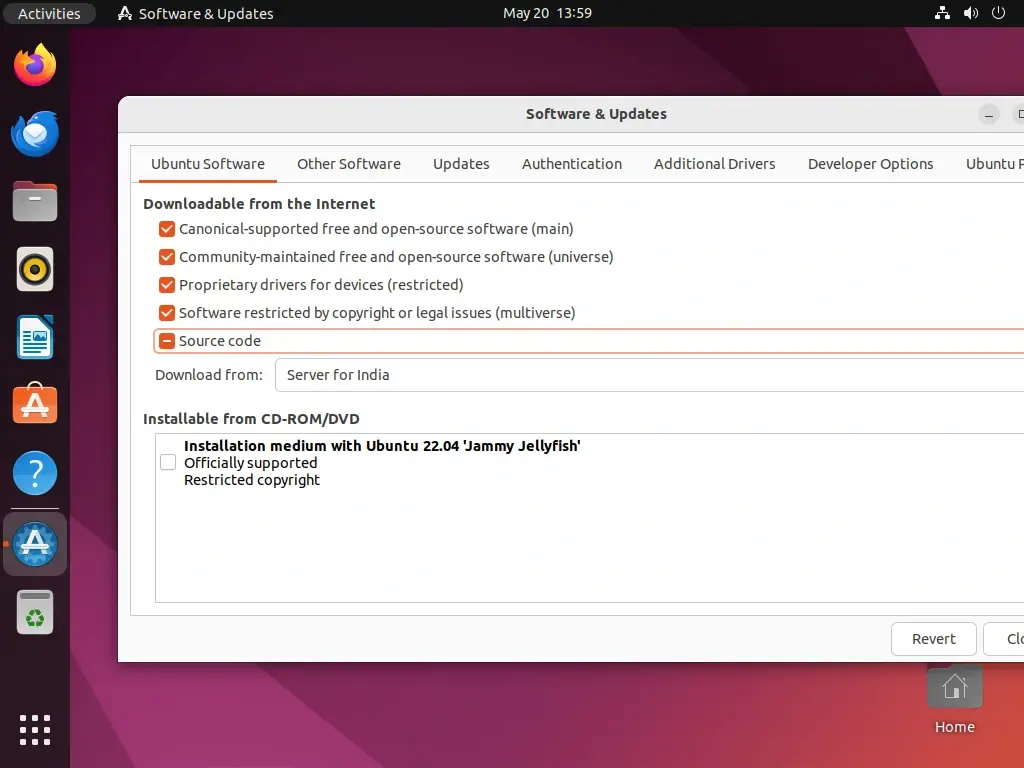
After making any changes to the software sources, click “Close” and then “Reload” to update the software repositories.
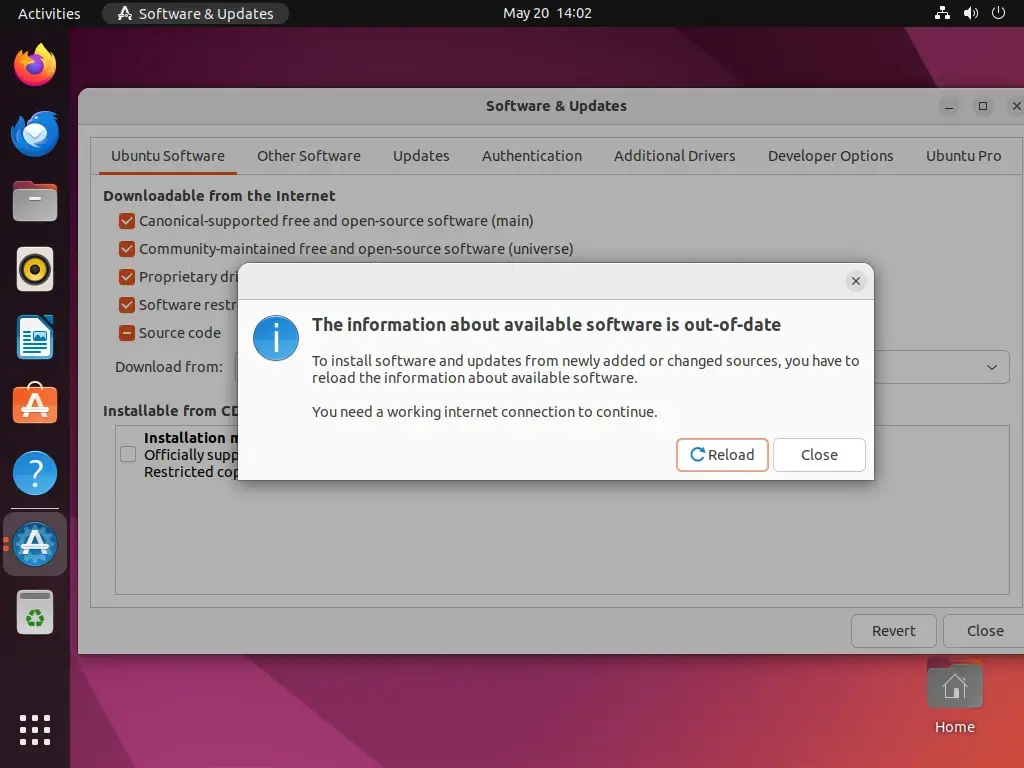
Next, open a terminal and issue the following commands to keep your system secure and protected against potential vulnerabilities.
sudo apt-get update
sudo apt-get upgrade
Install Basic Software
For basic user usage, type “Ubuntu Software” in the search bar, press Enter to open it, and browse through the search results to find the software you’re looking for.
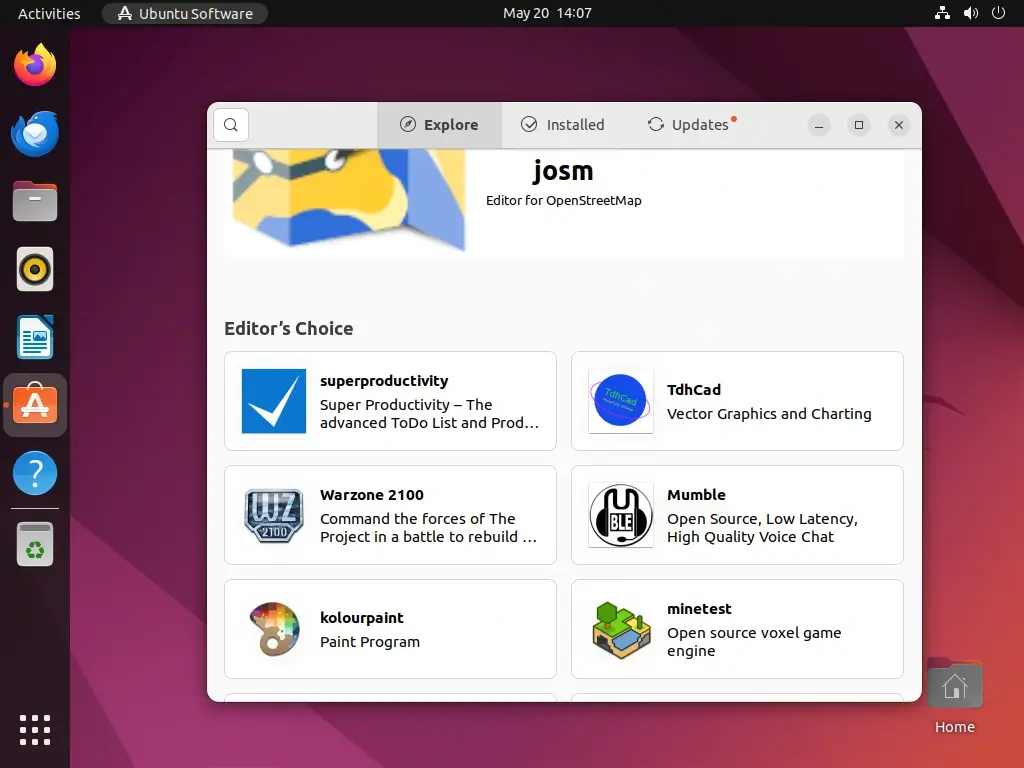
Enable ‘Minimize on Click
If you prefer to minimize windows by clicking on the app icon, you can enable this feature using a simple command in the terminal:
gsettings set org.gnome.shell.extensions.dash-to-dock click-action 'minimize'
Install GNOME Tweaks
GNOME Tweaks is a powerful tool that allows for extensive customization options such as changing themes, fonts, window behavior, and more.
You can install GNOME Tweaks through the Ubuntu Software app and access it from the applications grid by searching for “tweaks“.
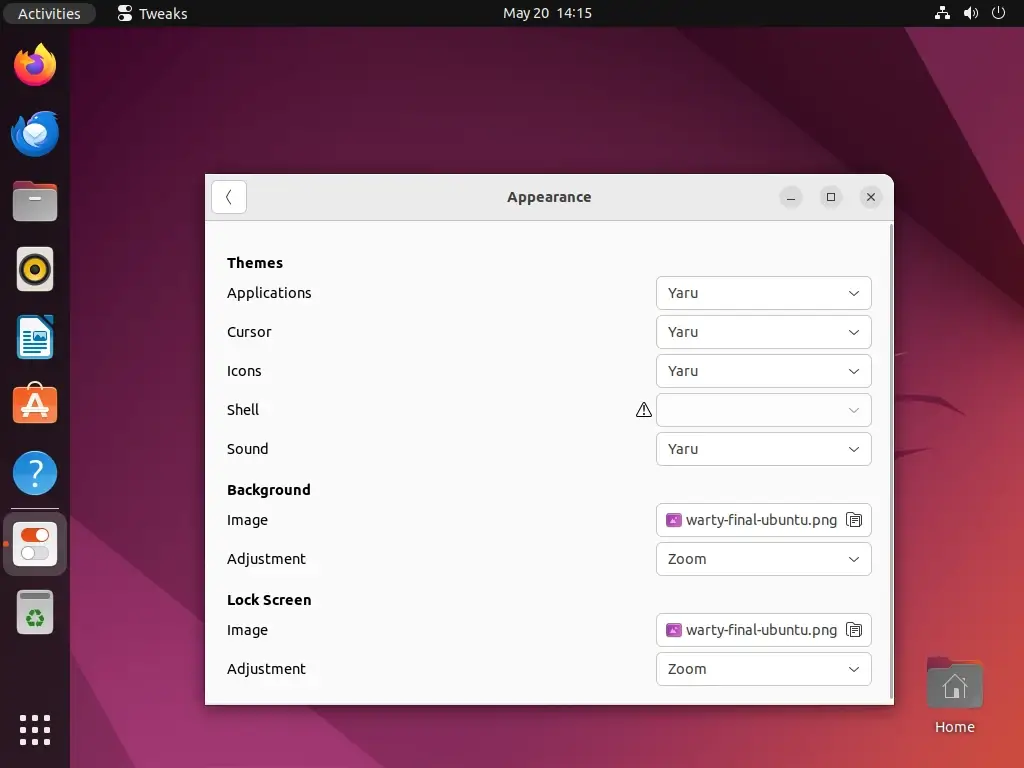
Enable Night Light
You might want to turn on the “night light” setting in GNOME, which helps to lower the amount of blue light that comes from your screen. This can be good for your sleep. You can find this setting in the “Screen Display” part of your Settings.
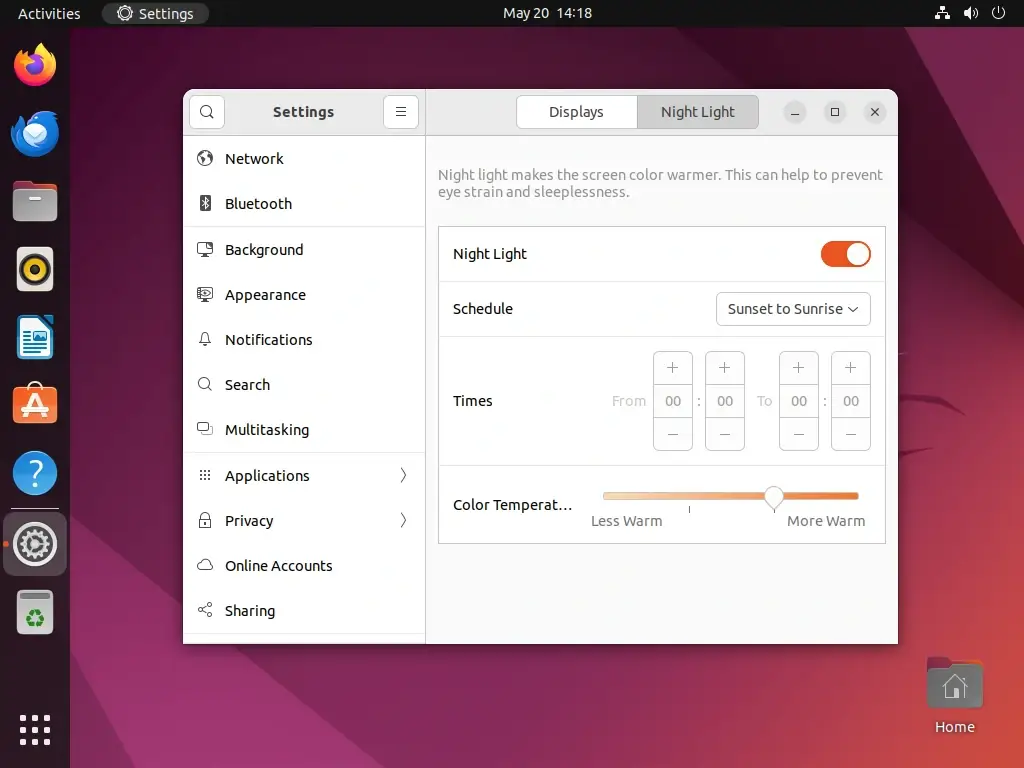
Customize Desktop Environment
Ubuntu offers different desktop environments like GNOME, KDE, and Xfce. You can install and switch between these environments based on your preferences using terminal commands as shown.
Install KDE on Ubuntu:
sudo apt install kubuntu-desktop
Install Xfce on Ubuntu:
sudo apt install xubuntu-desktop
Install Snap Packages
You might want to try installing Snap packages, a new way of packaging software for Linux. It lets you get lots of different software applications and tools easily.
sudo apt install snapd
That’s all for basic Ubuntu installation and minimal software required for average users to browse the Internet, instant messaging, listen to music, watch movies, YouTube clips, or write documents.
